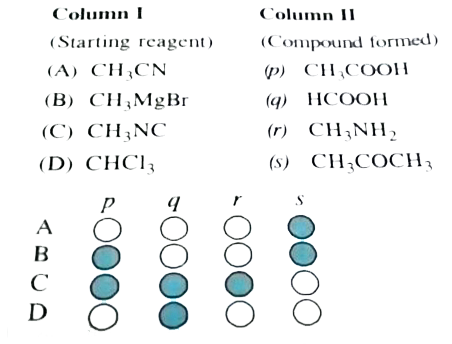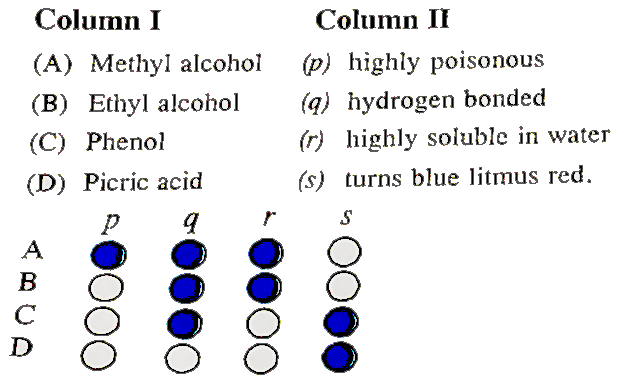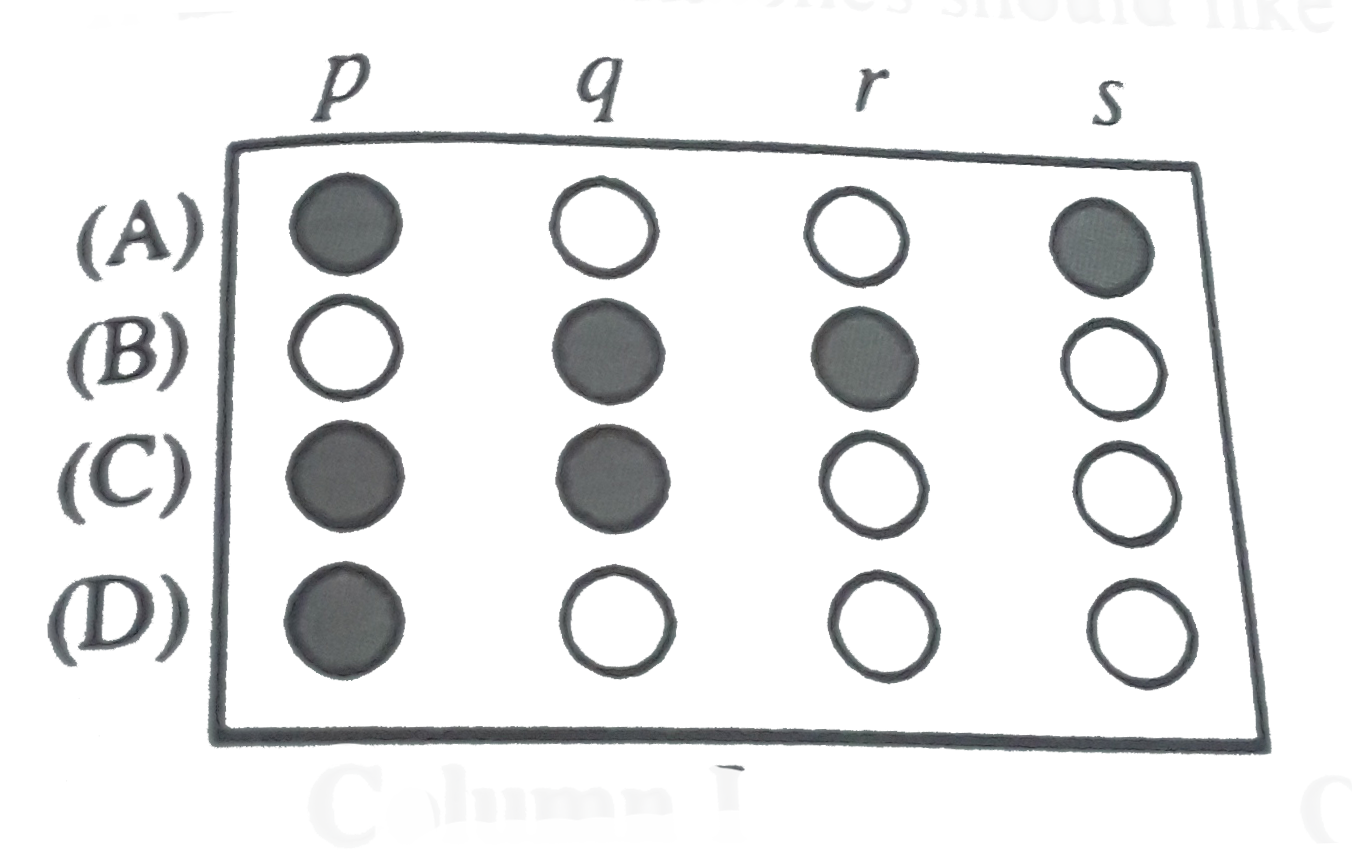Match the statements (A, B, C, D) in Column I with the statements (p, q, r, s) in Column II. Answers to the questions have to be properly bubbled.
∣∣
∣
∣
∣
∣
∣∣Column IColumn II(A)CH3CH(OH)CHO(p)Carbohydrate(B)HOCH2CH(OH)CHO(q)Amino acid(C)CH3CH(NH2)COOH(r)Positive Tollen's test(D)C6H5CH(CH2NH2)COOH(s)Ninhydrin test∣∣
∣
∣
∣
∣
∣∣

Step by step video & image solution for Match the statements (A, B, C, D) in Column I with the statements (p, q, r, s) in Column II. Answers to the questions have to be properly bubbled. |{:(,"Column I",,"Column II"),((A),CH_(3)CH(OH)CHO,(p),"Carbohydrate"),((B),HOCH_(2)CH(OH)CHO,(q),"Amino acid"),((C ),CH_(3)CH(NH_(2))COOH,(r ),"Positive Tollen's test"),((D),C_(6)H_(5)CH(CH_(2)NH_(2))COOH,(s),"Ninhydrin test"):}| by Chemistry experts to help you in doubts & scoring excellent marks in Class 12 exams.
Updated on:21/07/2023Topper's Solved these Questions
- BIOMOLECULESBOOK - DINESH PUBLICATIONCHAPTER - BIOMOLECULESEXERCISE - Assertion-Reason
13 Videos
- BASIC PRINCIPLES OF ORGANIC CHEMISTRYBOOK - DINESH PUBLICATIONCHAPTER - BASIC PRINCIPLES OF ORGANIC CHEMISTRYEXERCISE - Matrix Type Questions
2 Videos
- CARBOXYLIC ACIDS BOOK - DINESH PUBLICATIONCHAPTER - CARBOXYLIC ACIDS EXERCISE - BRAIN STORMING MULTIPLE CHOICE QUESTIONS (MCQS)
13 Videos
Similar Questions
Match the statements (A,B,C,D) in column I with the statements (p,q,r,s) is column II. The answers to the question have to be properly bubbled.

View SolutionMatch the statement (A, B, C, D) in column I with statement (p, q, r, s) in column II. The answers to the question are to be properly bubbled.

View SolutionMatch the following :
Column IColumn II(a)CH6H5CHO(p)Haloform reaction(b)HCHO(q)Fehling's solution(c)CH3CHO(r)Cannizzaro reaction(d)CH3−CO−CH3(s)Knoevenagel reaction
View SolutionMatch the following :
Column IColumn II(a)C6H5−CHO(p)positive iodoform test(b)CH3−CHO(q)reduces Fehling's solution(c)H−CH=O(e)positive Tollens' test(d)CH3−OH∣CH−O∣∣C−CH3(s)Brady's reagent turns red
View SolutionHere each question contains statements given in two column which have to be matched. Statements in columns I are labelled as A, B, C and D where as the statements in column II are labelled p, q, r and s. The answers to these questions are to be appropriately bubbled as illustrated in the following example.
If the correct matches should like the following.

Column IColumn II(A)SO2(p)Basic(B)H2SO4(q)Acidic(C)HNO3(r)Reducing(D)NH3(s)Oxidizing
View SolutionMatch the column I and II. (Matrix)
Column IColumn II(a)H3C−CH=CH−CH3(p)Dipole(cis>trans)(b)H3C−CH=CH−CN(q)Dipole(trans>cis)(c)H3C−CH=CH−Cl(r)Melting point(trans>cis)(d)Cl−CH=CH−Cl(s)Boiling point (cis>trans)
View SolutionCH3OH,C2H5OH,CH3COOH,C3H7OH
View SolutionColumn I (Solvent)Column II (Nature)(A)Methyl alcohol(CH3OH)(p)Protophilic(B)Benzene(C6H6)(q)Protogenic(C)Ammonia(NH3)(r)Amphiprotic(D)Acetic acid(CH3COOH)(s)Aprotic
View SolutionMatch the column I and II (Matrix)
Column IColumn II(a)−NO2(p)m effect(b)−O−(q)+m effect(c)−O−CH3(r)−I effect(d)−C≡N(s)−Ieffect
View SolutionCOlumn(I)Column(II)AcidpKa(a)CH3−CO2H(p)5.69(b)(CH3)3⊕NCH2CO2H(q)4.27(c)(CH3)3⊕N(CH2)4CO2H(r)1.83(d)−O2C−CH2−CO2H(s)4.80
View Solution
